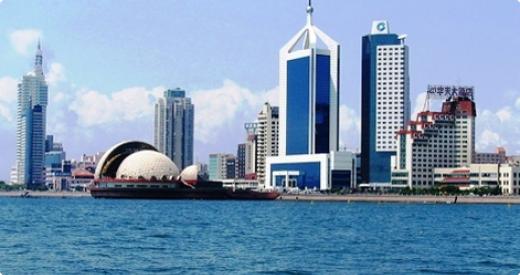Qingdao: Cultural Snapshot

Population: 8.5 million
Cuisine: Shandong “Lu” cuisine
Signature dishes: Sweet-and-sour Yellow River carp, three-threaded shark fin soup, braised sea cucumber, Dezhou stewed chicken, nine-turn pig intestines, cattail and cream soup, Mandarin fish, Kungpao chicken.
Wine culture: Developing wine market; situated in Shandong province, one of China’s main wine-producing areas
Wine duty: Approximately 48%
BACKGROUND
Nestled at the base of Lao Shan mountain, Qingdao is a pleasant coastal city situated on the southern tip of the Shandong Peninsula. Until the end of the 19th century, Qingdao remained a small and picturesque fishing village. However, its strategic location overlooking the Yellow Sea made it attractive to foreign colonial forces who seized and established the city as a treaty port—first Germany, then Japan. Control of Qingdao returned the China in 1922 and the city has managed to preserve its historic landmarks and natural scenery.
Qingdao’s uncommon mix of German and Chinese architecture remains largely intact. Owing to its history, neighborhoods in the older parts of the city retain styles from earlier foreign occupation. The people of the city have also developed a taste for beer, as Qingdao is also home to China’s largest beer producer, Tsingdao Brewery. Although Germany and Japan have both left its colonial stamp, the size of the expatriate population from either country is small in number. The largest expatriate group is Korean, with a population of roughly 60,000.
Today, Qingdao is world famous for its eponymous beer brewery and is a popular destination for travel. After the Chinese government designated the district a Special Economic and Technology Development Zone, the city flourished with it, serving also as a major seaport, naval base, and industrial center. Although the city has in the past 20 years undergone dramatic developments in trade and finance, the pace of life has, in comparison to similar Chinese cities, remained delightfully laid back.









